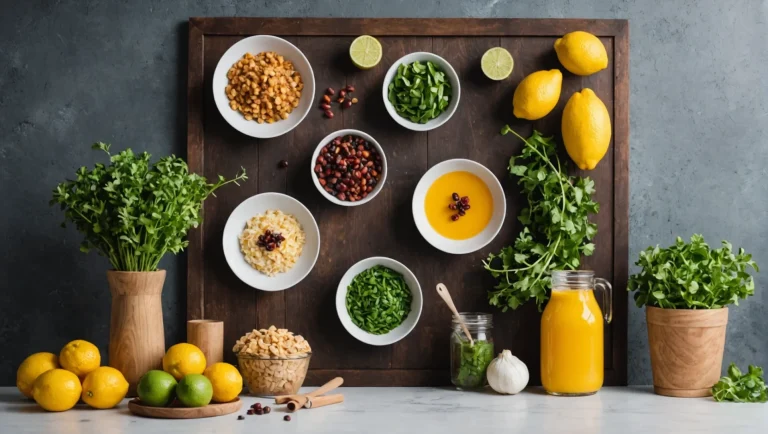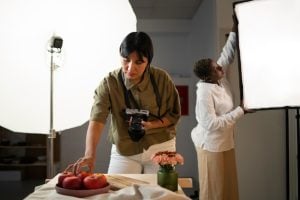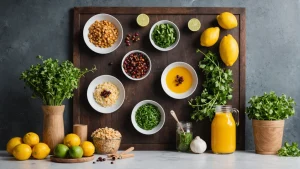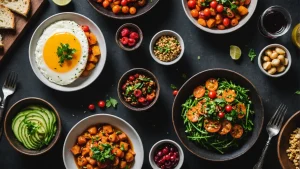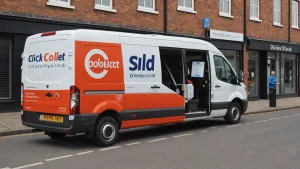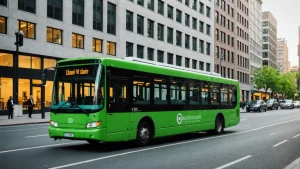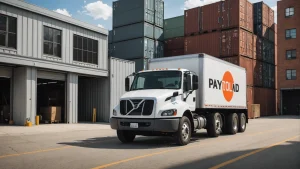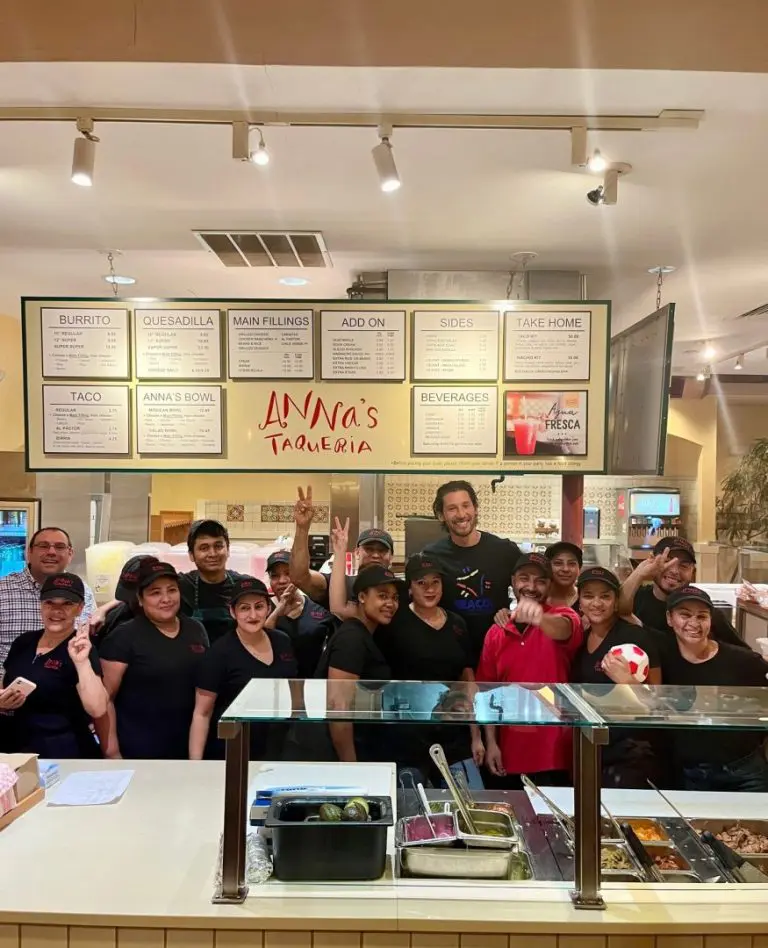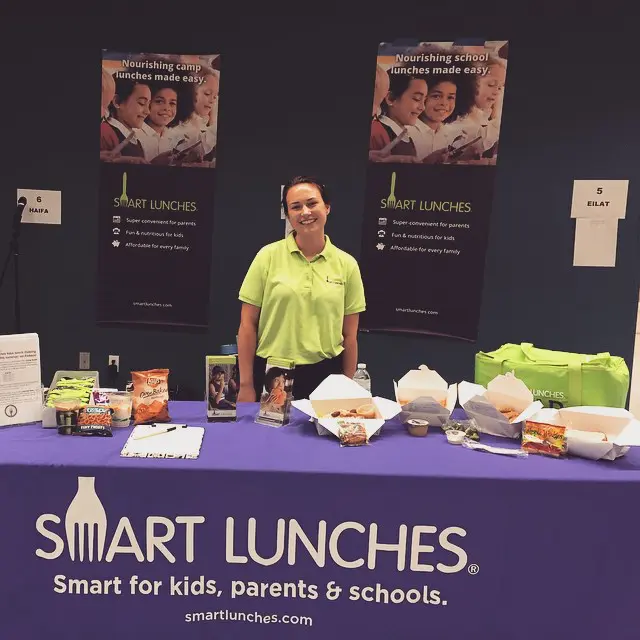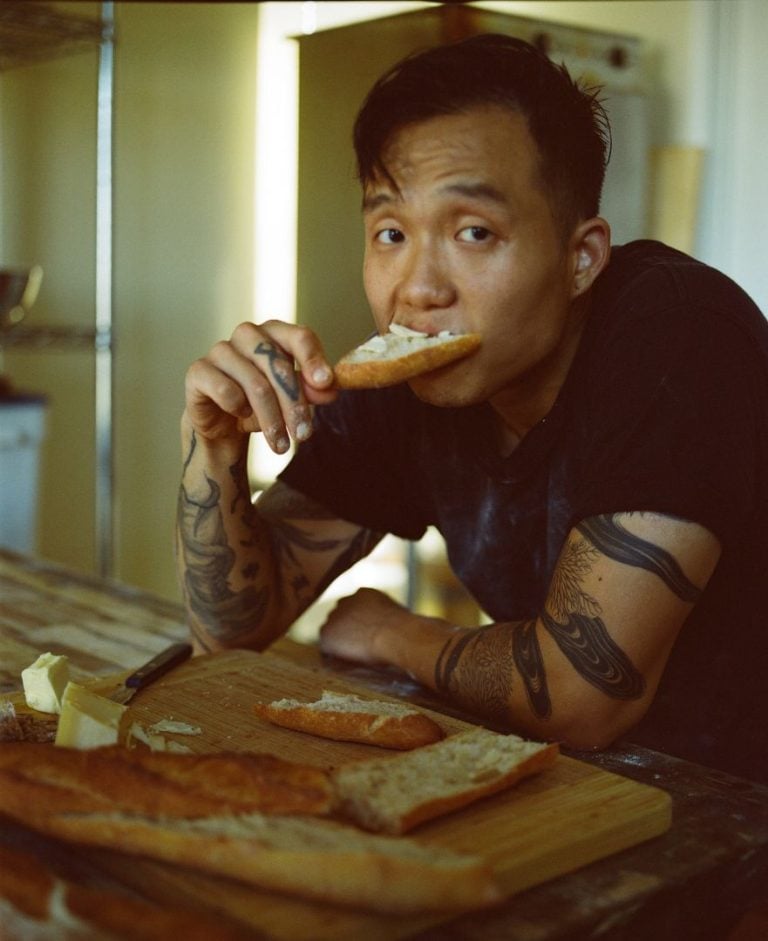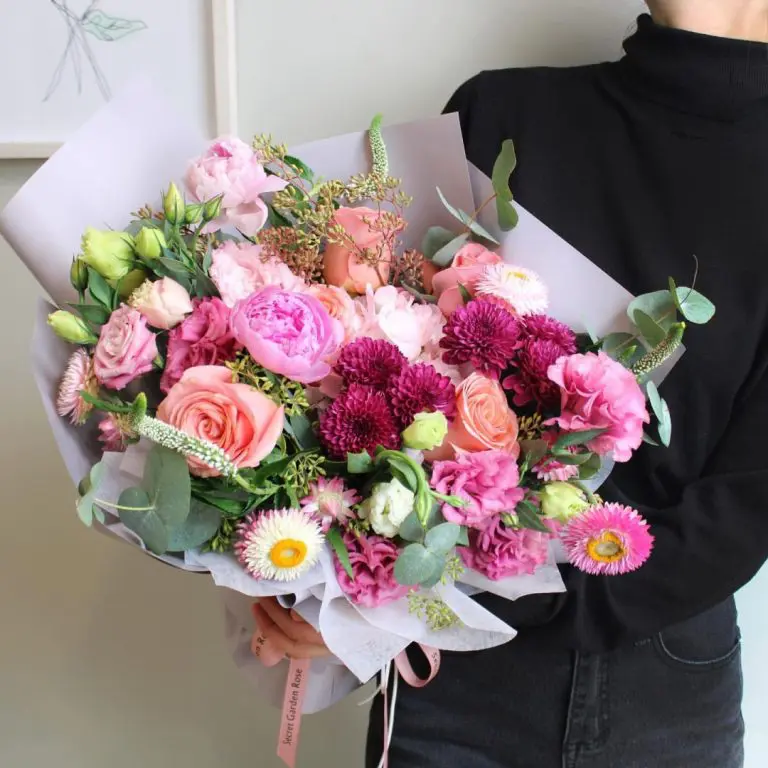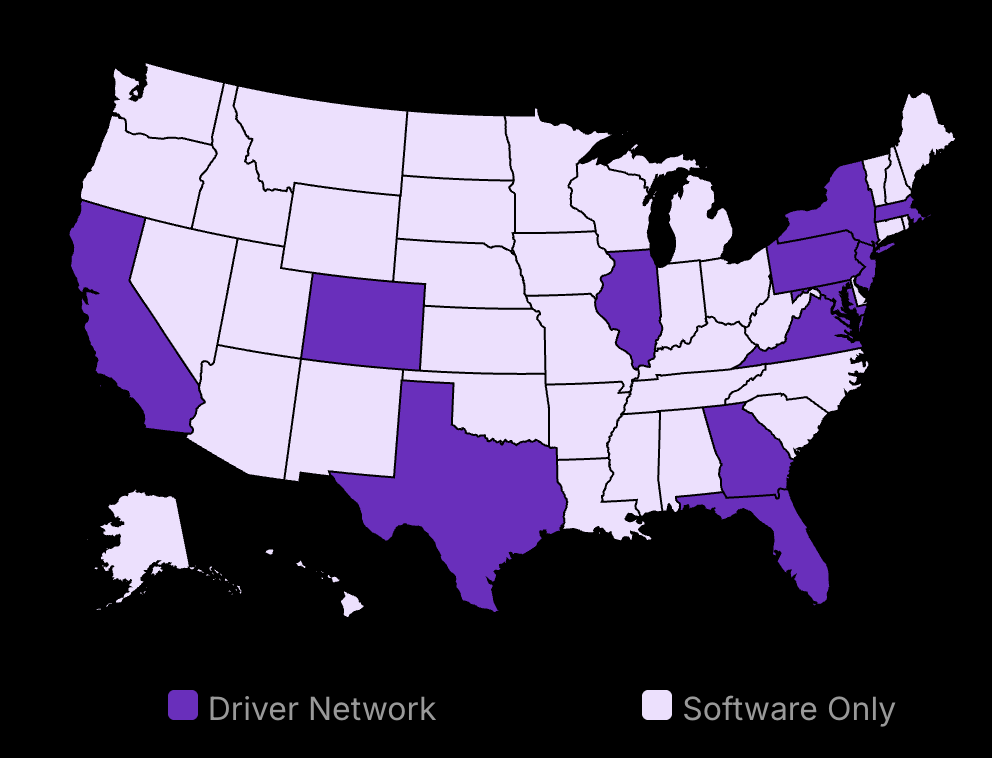Are your food photos falling flat?
It’s time to level up your game with creative food photography backdrops that make your dishes pop and your business stand out in 2024.
Discover 20 easy ways to transform your photos, from textured surfaces to gorgeous monochromatic looks, and become a backdrop styling pro.
Learn how to choose the perfect backdrop for your brand and target audience, and invest in high-quality options that set you apart from the competition.
Whether you’re a seasoned photographer or just starting out, these expert tips will help you create mouth-watering images that grow your business and leave your customers hungry for more.

Lower your delivery costs by 23%
How we reduce costs:
- No delivery vehicle expenses
- Optimized local routes
- Pay-per-delivery model
- Average 23% delivery cost reduction
12 Creative Food Photography Backdrop Ideas to Make Your Photos Pop
Use Textured Surfaces Like Wood, Marble, or Concrete
Textured surfaces add depth and interest to your food photos, creating a visually appealing background that complements the dish. Wood, marble, and concrete are popular choices among food photographers, as they provide a natural, rustic, or modern look, depending on the style you’re aiming for.
When using wood backdrops, consider the color and grain of the wood. Lighter woods like pine or birch can create a bright and airy feel, while darker woods like walnut or mahogany can add warmth and richness to your photos. Experiment with different finishes, such as weathered, polished, or painted wood, to find the perfect match for your dish.
Marble and concrete backdrops offer a sleek and sophisticated look, ideal for showcasing elegant desserts or minimalist dishes. The cool tones of these materials can make colorful foods pop, while their smooth texture provides a clean and modern aesthetic.
Incorporate Patterned Fabrics or Wallpapers
Patterned fabrics and wallpapers can add a playful and creative touch to your food photography backdrops. From subtle floral prints to bold geometric patterns, there are endless options to choose from. When selecting a patterned backdrop, consider the scale of the pattern relative to the size of your dish. Smaller patterns work well for detailed shots, while larger patterns can create a striking background for simpler dishes.
Another factor to keep in mind is the color scheme of your patterned backdrop. Choose colors that complement your dish and align with your brand’s aesthetic. If you’re showcasing a colorful dish, opt for a more subdued pattern to avoid overwhelming the food. Conversely, a bold pattern can add visual interest to a monochromatic or neutral-colored dish.
Create A Monochromatic Look With Colored Backdrops
Monochromatic color schemes can create a striking and cohesive look in your food photography. By sticking to one color family, you can create a visually harmonious composition that draws the viewer’s eye to the food. To create a monochromatic look, choose a backdrop in a solid color that complements your dish.
When selecting a color for your backdrop, consider the mood and atmosphere you want to convey. Warm colors like red, orange, and yellow can create a cozy and inviting feel, while cool colors like blue, green, and purple can evoke a sense of calm and tranquility. Neutral colors like white, gray, and beige can provide a clean and minimalist backdrop that allows the food to take center stage. Elevate your culinary photo shoots by mastering the nuances of photographing food, using these backdrop color strategies to enhance the appeal and emotion of your images.
To add depth and interest to your monochromatic backdrop, experiment with different shades and tints of the same color. For example, if you’re using a blue backdrop, you can incorporate lighter and darker shades of blue in your props and styling elements to create a more dynamic composition.
Experiment With Backdrop Sizes and Shapes
When it comes to food photography backdrops, size and shape matter. The size of your backdrop should be proportional to the size of your dish and the composition you’re aiming for. For close-up shots or flatlays, a smaller backdrop, such as a 2×2 ft or 2×3 ft board, can work well. For wider shots or scenes with multiple dishes, a larger backdrop, such as a 4×4 ft or 4×6 ft board, may be necessary.
In addition to size, consider the shape of your backdrop. While rectangular backdrops are the most common, you can also experiment with circular, oval, or irregularly shaped backdrops to add visual interest and creativity to your photos. For example, a circular backdrop can create a stunning frame for a cake or pie, while an irregularly shaped backdrop can add a whimsical touch to a dessert table.
Use Natural Elements As Backdrops
Incorporating natural elements into your food photography backdrops can add a fresh and organic feel to your photos. Leaves, flowers, fruits, and vegetables can all make beautiful and unique backdrops that complement your dish and create a sense of seasonality.
When using natural elements as backdrops, consider the color, texture, and shape of the elements in relation to your dish. For example, dark green leaves can provide a stunning contrast to bright, colorful fruits, while delicate flower petals can add a romantic and ethereal touch to a dessert.
To create a natural backdrop, you can either arrange the elements directly on a surface or create a flat lay by laying them out on a piece of paper or fabric. Experiment with different arrangements and compositions to find the perfect balance between the natural elements and your dish.

Metrobi is transforming food product deliveries
Specialized solutions for food product businesses:
- Food product-trained drivers
- Proper handling equipment
- Peak day delivery support
- 23% average cost reduction
Expert Tips for Styling Food Photography Backdrops Like a Pro
Keep It Simple and Minimalistic
When it comes to food photography backdrops, less is often more. Avoid cluttered backgrounds that distract from the main subject – the food itself. As renowned food photographer Andrew Scrivani states, “The backdrop should be a supporting player, not the star of the show. Keep it simple and let the food take center stage”.
Opt for neutral colors and simple textures that won’t compete with the dish. If you don’t have a minimalist background, it’s better to remove the bg from photo. A plain white or black backdrop can be incredibly versatile and effective. Food stylist Rishon Hanners recommends, “Start with a basic white or black backdrop. You can always add texture and interest with props, but a clean, simple background is a must-have in any food photographer’s toolkit”.
Consider The Mood and Theme of The Dish
When selecting a food photography backdrop, think about the overall mood and theme shooting food that you want to convey. Choose backgrounds that complement the cuisine and ingredients you’re showcasing.
For moody or dramatic shots, opt for darker backdrops and shadows that create a sense of depth and intrigue. Food photographer Lauren Caris Short suggests, “For a moodier vibe, try using a dark, matte surface like a black or deep navy blue backdrop. It can really make bright colors and contrasting textures pop”.
On the other hand, lighter backgrounds work well for fresh, airy photos that evoke a sense of lightness and simplicity. As food stylist Judy Kim notes, “A light, neutral backdrop is perfect for showcasing dishes with delicate colors or intricate details. It allows the food to be the focus without any distractions”.
Use Props Sparingly and Purposefully
While props can add context and visual interest to your food photos, it’s important to use them sparingly and with intention. Select props that help tell the story of the dish or complement its colors and textures.
When choosing props, consider how they will work with your selected backdrop. Aim for a cohesive color scheme and style that feels natural and unforced. Food stylist Tami Hardeman suggests, “Look for props that share a common color or texture with your backdrop. This helps create a sense of harmony and makes the overall composition feel more intentional”.
By keeping these expert tips in mind, you’ll be well on your way to styling stunning food photography backdrops that elevate your images and captivate your audience. Proper lighting can significantly enhance the overall quality of your food photography. Understanding how to manipulate natural light and utilize artificial sources can make your dishes appear more appetizing and dynamic. For further insights, check out this comprehensive guide on mastering food photography lighting and transforming your images into irresistible showcases.
How to Choose the Right Food Photography Backdrop for Your Business
Consider Your Brand Aesthetic and Target Audience
When selecting food photography backdrops for your business, it’s crucial to choose designs that align with your brand’s visual identity and appeal to your ideal customer. Take the time to analyze your product photographers’ brand colors, style, and overall aesthetic to ensure consistency across all your product photos.
Opt for backdrops that complement your brand colors and create a cohesive look. If your brand has a minimalist, clean aesthetic, consider using solid-colored or subtly textured backdrops. For a more rustic or vintage vibe, explore wood, stone, or distressed metal backgrounds.
Research your target audience to understand their preferences and what visually appeals to them. If you’re targeting a high-end, luxury market, consider using backdrops with rich textures like marble, velvet, or leather. For a more casual, friendly brand, opt for bright colors and playful patterns.
Opt For Versatile Backdrops That Work For Multiple Dishes
To maximize your investment and streamline your photography process, choose backdrops that can be used for a variety of food types and cuisines. This versatility will save you time and money in the long run, as you won’t need to purchase new backdrops for every shoot.
Look for backdrops with neutral colors and textures that complement a wide range of dishes. Materials like wood, stone, and linen work well for both sweet and savory items, from pastries and desserts to main courses and appetizers.
When selecting backdrops, consider colors and textures that can be used for various culinary styles. A rustic wood backdrop can work well for both Italian pasta dishes and Mexican street food, while a clean, white marble background can showcase both Japanese sushi and French pastries.
If you plan on doing food photography shoots at different locations, such as restaurants or events, consider the size and portability of your backdrops. Opt for lightweight, easy-to-transport materials that can be quickly set up and taken down. Collapsible or roll-up backdrops are great options for on-the-go shoots.
When it comes to choosing the best backdrop for selling items online, opt for a clean, uncluttered background that puts the focus on your product. A simple, neutral backdrop, such as a white or light-colored wood, can effectively showcase your food items without distracting the viewer. This approach allows potential customers to clearly see the details and appeal of your products, increasing the likelihood of a sale.
The Difference Between Backgrounds and Backdrops in Food Photography
Backgrounds Are The Overall Setting of The Photo With Artificial Light
Backgrounds in food photography refer to the entire scene or environment surrounding the main subject. This can include elements like the room, furniture, or outdoor location where the photo is taken. The background helps to establish the context and atmosphere for the food being showcased.
For example, if you’re photographing a rustic apple pie, you might choose a background that includes a wooden table, a lace tablecloth, and some antique kitchen utensils. This type of background would contribute to the overall cozy and nostalgic feel of the image.
An effective background enhances depth in food photography. This can be achieved by keeping the main subject sharp while slightly blurring the background, a technique known as shallow depth of field. It draws attention to the food and creates a more visually appealing image. However, for a completely distraction-free background, a background remover tool can be useful. It isolates the subject, allowing it to be placed on a different or transparent background, making it ideal for menu design, product catalogs, or other creative uses.
Backdrops Are The Surface Directly Behind The Food
In contrast to backgrounds, backdrops specifically refer to the surface or material placed directly behind the food subject. This is typically a flat surface, such as objects such as a table, cutting board, or piece of fabric, that serves as a clean and simple base for the food to sit on.
Backdrops are often chosen based on their color, texture, or pattern, and how well they complement the food being photographed. For instance, a sleek white marble backdrop might be used to showcase an elegant dessert, while a rustic wooden board could be perfect for a hearty sandwich or charcuterie spread.
The Importance of Understanding The Difference
Knowing the distinction between backgrounds and backdrops is crucial for creating successful food photography. By understanding how each element contributes to the overall image, you can make more intentional choices when planning and setting up your shots.
For example, if you’re shooting a product for a luxury chocolate brand, you might opt for a simple, dark backdrop to keep the camera focus on the product, while still using a background that suggests elegance and refinement, such as a slightly out-of-focus view of a high-end restaurant or a beautifully set table.
5 Essential Food Photography Backdrop Business Tips for Success
Invest In High-Quality, Durable Backdrops
When building your food photography backdrop collection, it’s crucial to choose materials that can withstand frequent use and cleaning. Look for backdrops made from durable, easy-to-clean materials like vinyl, PVC, or high-quality paper. These materials will save you time and money in the long run, as they won’t need to be replaced as often as less durable options.
It’s also important to consider how the backdrops photograph under different lighting conditions. As professional food photographer Skyler Burt notes, “I always test my backdrops in various lighting setups to ensure they perform well across different scenarios. It’s essential to have backdrops created that look great in both natural and artificial light.”
When selecting backdrops, think about the long-term cost-effectiveness. While higher-quality backdrops may have a higher upfront cost, they often provide better value over time due to their durability and versatility. For instance, vinyl backdrops from Capture By Lucy are known for their high-quality details and texture reproductions, making them a worthwhile investment.
Offer A Variety of Backdrop Options to Clients
To attract and retain clients, it’s essential to have a diverse range of backdrop options available. This includes offering various colors, realistic texture options, and styles to accommodate different client preferences and brand aesthetics.
As food photographer and educator Joanie Simon advises, “Having a wide selection of backdrops allows you to cater to a broader range of clients and projects. It also demonstrates your versatility and creativity as a photographer.”
Continuously update and expand your backdrop collection to stay current with industry trends and meet evolving client needs. This will help you maintain a competitive edge and attract new business opportunities. For example, incorporating DIY backdrops made from materials like plywood and canvas can add variety to your collection without breaking the bank.
Develop A Signature Style With Your Backdrops as Food Photographers
Creating a recognizable look with your backdrops can help you stand out from competitors and establish a strong brand identity. Use your backdrops consistently across your portfolio and marketing materials to reinforce your unique style.
Food photographer and stylist Rachel Korinek emphasizes the importance of developing a signature look: “Having a cohesive style across your work makes you more memorable to potential clients. When they see your backdrops, they should immediately associate them with your brand.”
By becoming known for your distinct backdrop style and expertise, you’ll attract clients who appreciate your aesthetic and are willing to pay a premium for your services.
Ready to Elevate Your Food Photography Game?
With these 20 easy ways to use food photography backdrops, you can create stunning images that make your business stand out. From textured surfaces to patterned fabrics, monochromatic looks to minimalistic styling, there’s a backdrop solution for every brand aesthetic and dish.
When selecting backdrops product photography for your business, prioritize quality, versatility, and a signature style that sets you apart. By offering a range of options and consistently delivering exceptional photos and cooking videos, you’ll attract more clients and grow your business. As you look to enhance your food photography, consider how innovative technologies like AI product photography are starting to transform the industry in 2025, providing new opportunities and efficiencies that can elevate your imagery even further.
So, what’s the first step you’ll take to level up your food photography backdrops? Will you experiment with a new texture, invest in a high-quality backdrop, or streamline your styling process?
Remember, the right backdrop can make all the difference in showcasing your culinary creations and captivating your audience. Start implementing these tips today and watch your food photography soar to new heights.

